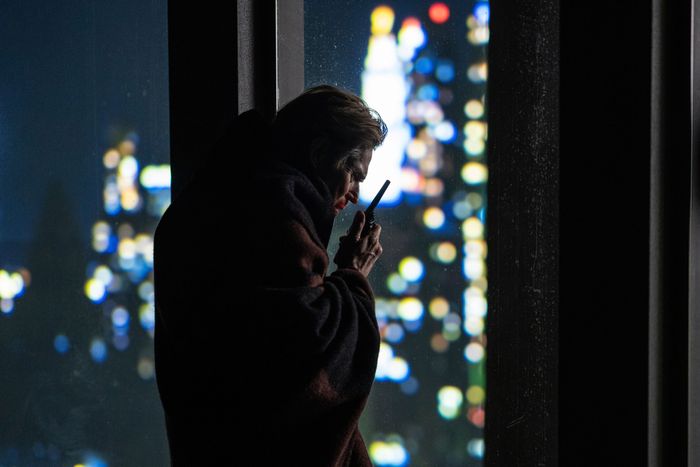
It’s common knowledge among New Yorkers that the luxury apartment towers that protrude from the skyline like raised middle fingers are half-empty, vertical ghost towns where oligarchs, investors, and other members of the globe-trotting elite store their money in the form of prime Manhattan real estate that largely goes unoccupied. These vacancies may actually have more to do with how many of those luxury apartments have gone unsold than anything else — it turns out that there’s only so much demand for ultrahigh-end properties — but it’s the emotional truth of the situation that matters more. In a place where it’s an ongoing struggle to maintain the barest toehold, the idea of not just having vast amounts of space but letting it sit unused is decadent on a dizzying, infuriating level. To walk around the city is to be loomed over by the abandoned kingdom of the rich, an exclusive realm it’s impossible to not imagine sneaking into once you’re aware of it — even if it’s only to sample what it’s like to have too much.
Willem Dafoe does exactly that in Inside, a film from director Vasilis Katsoupis that takes place entirely inside a penthouse apartment that Dafoe’s character, an art thief named Nemo, gets trapped in for months after a break-in goes wrong. Yet the results are dispiritingly pleasureless, as though to fully embrace the idea of a penthouse prison would get in the way of the movie’s nebulous ideas about art. Inside strives for an austerity that suggests it has something on its mind, though by the end, it feels like it was just killing time. Dafoe, who’s alone onscreen (aside from members of the building staff Nemo watches on a CCTV feed), throws himself into a performance that’s frequently carried out in silence. But all of that effort goes into a character who’s such a cipher that watching his struggles to survive feels like observing a creature putter around a giant terrarium for 100 minutes. Inside isn’t another of those eat-the-rich tales that have been proliferating across our screens lately — not because it has another perspective but because it doesn’t really have one at all.
It’s a waste of a premise, and that premise is a great one. The midtown apartment that Nemo breaks into is a temple of brutalist tastefulness with floor-to-ceiling windows, gray interiors adorned with contemporary art, and an indoor pool that becomes useful when he discovers the water is turned off. Katsoupis and his co-writer, Ben Hopkins, cheat in some ways to put extra pressure on Nemo — including breaking the climate system so that the temperature rockets between extreme heat and cold, making it so that neither the elaborate greenery nor the tropical fish require caretakers stopping by, and having the building be so impeccably insulated that neither screaming nor flooding can penetrate through to even the foyer outside the front door. Honestly, it’d be funnier if the neighboring apartment were revealed to be empty — the owner of the place Nemo targeted is mentioned to be in Kazakhstan for the near future, though a picture of him, his daughter, and dog hangs on one of the walls.
Nemo is surrounded by million-dollar artwork but has to drink from the sprinkler system and can’t flush his gradually accruing shits down the toilet. This contrast is not as profound as Inside seems to believe it is, in part because all of that carefully chosen artwork, sealed away from the public in a private collection high above the heads of the public, never comes across as anything more than expensive décor. Despite the contortions the screenplay goes through to place its main character in desperate straits within a sumptuous setting, it’s the more natural details that are most satisfying. The fridge has been emptied out, for instance, leaving Nemo to get by on condiments and pantry items — including a jar of fancy tapenade that he eats while swaddled in blankets, looking out on the glittering city. If there’s ever a moment when Nemo takes any perverse pleasure in the ostentatious view or the art he was so intent on liberating, we never glimpse it. Nemo goes through a lot in his attempts to escape and stay alive, turning the apartment into a sort of installation of its own as the weeks and months pass. Yet as a movie, Inside is utterly bloodless — an exercise in eking out an existence in improbable circumstances that just feels like a chore.
More Movie Reviews
- The Thriller Drop Is a Perfect Addition to the Bad-First-Date Canon
- The Accountant 2 Can Not Be Taken Seriously
- Another Simple Favor Is So Fun, Until It Gets So Dumb


